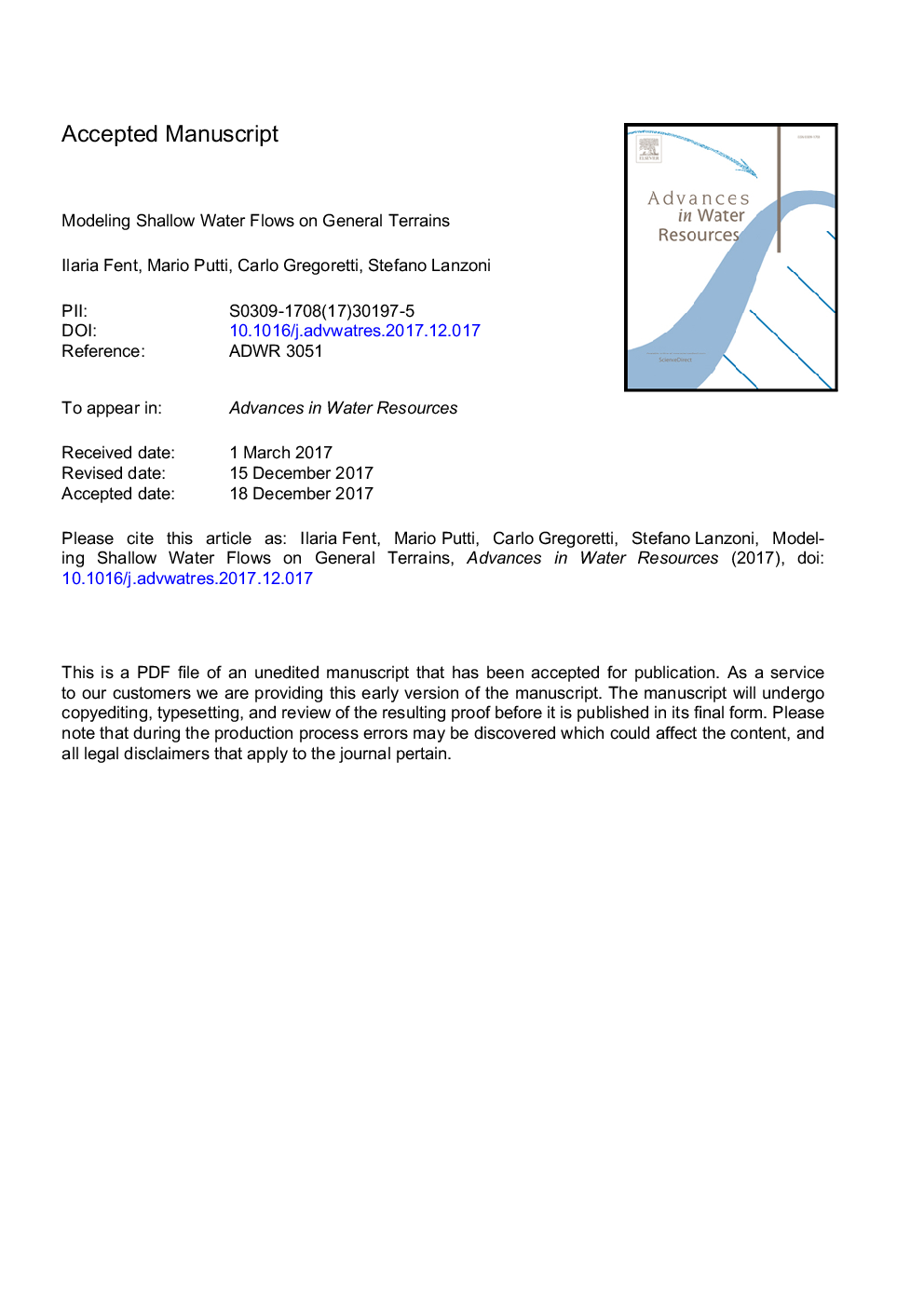| کد مقاله | کد نشریه | سال انتشار | مقاله انگلیسی | نسخه تمام متن |
|---|---|---|---|---|
| 10117734 | 1625591 | 2018 | 60 صفحه PDF | دانلود رایگان |
عنوان انگلیسی مقاله ISI
Modeling shallow water flows on general terrains
ترجمه فارسی عنوان
مدل سازی آب کم عمق در زمین های عمومی جریان دارد
دانلود مقاله + سفارش ترجمه
دانلود مقاله ISI انگلیسی
رایگان برای ایرانیان
کلمات کلیدی
آب کم عمق، توپوگرافی عمومی، اثرات انحنای، حجم محدود
موضوعات مرتبط
مهندسی و علوم پایه
علوم زمین و سیارات
فرآیندهای سطح زمین
چکیده انگلیسی
A formulation of the two-dimensional shallow water equations adapted to general and complex terrains is proposed. Its derivation starts from the observation that the typical approach of depth integrating the Navier-Stokes equations along the direction of gravity forces is not exact in the general case of a tilted curved bottom. We claim that an integration path that better adapts to the shallow water hypotheses follows the “cross-flow” surface, i.e., a surface that is normal to the velocity field at any point of the domain. Because of the implicitness of this definition, we approximate this “cross-flow” path by performing depth integration along a local direction normal to the bottom surface, and propose a rigorous derivation of this approximation and its numerical solution as an essential step for the future development of the full “cross-flow” integration procedure. We start by defining a local coordinate system, anchored on the bottom surface to derive a covariant form of the Navier-Stokes equations. Depth integration along the local normals yields a covariant version of the shallow water equations, which is characterized by flux functions and source terms that vary in space because of the surface metric coefficients and related derivatives. The proposed model is numerically discretized with a first order FORCE-type Godunov Finite Volume scheme that allows straight forward implementation of spatially variable fluxes. We investigate the validity of our SW model and the effects of the geometrical characteristics of the bottom surface by means of three synthetic test cases that exhibit non negligible slopes and surface curvatures. The results show the importance of taking into consideration bottom geometry even for relatively mild and slowly varying curvatures. By comparison with the numerical solution of vertically integrated models, we observe differences of almost 20%, in particular for the peak values and the shape of the hydrographs calculated at given sections of the fluid domain.
ناشر
Database: Elsevier - ScienceDirect (ساینس دایرکت)
Journal: Advances in Water Resources - Volume 121, November 2018, Pages 316-332
Journal: Advances in Water Resources - Volume 121, November 2018, Pages 316-332
نویسندگان
Ilaria Fent, Mario Putti, Carlo Gregoretti, Stefano Lanzoni,
